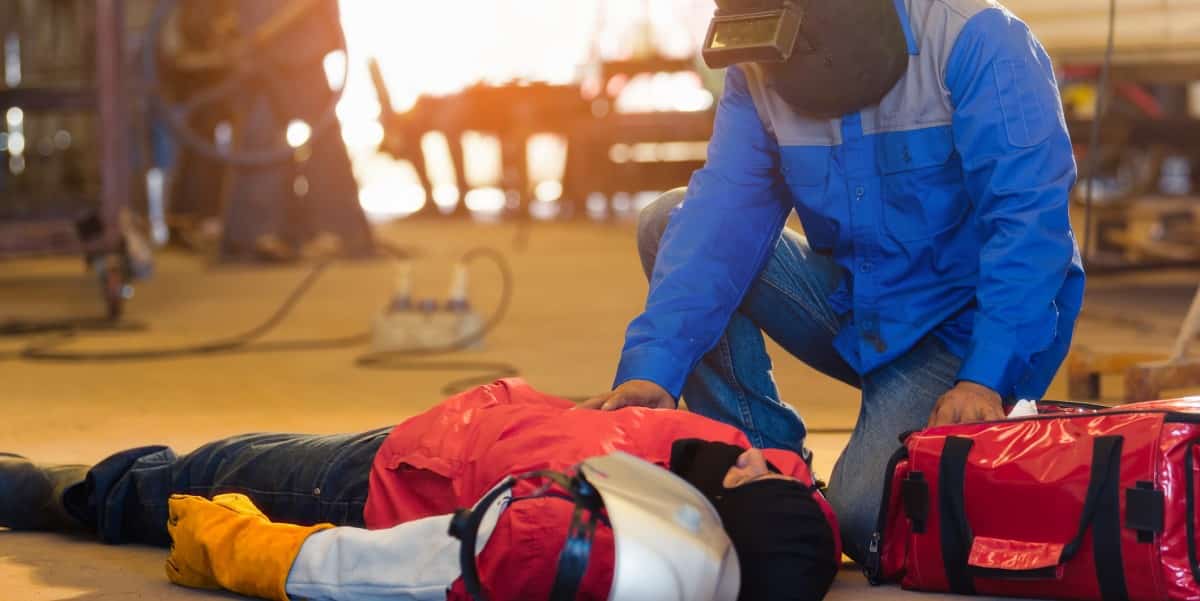Industrial accidents, while often preventable, can have profound consequences that ripple through the lives of workers, families, and communities. This in-depth guide delves into the multifaceted realm of industrial accidents, encompassing their definitions, causes, legal implications, and the invaluable role of the LaBovick Law Group. With decades of experience, we stand ready to be your steadfast ally in pursuing justice, compensation, and healing.
Understanding Industrial Accidents Deciphering the Essence and Ramifications
Industrial accidents are more than mere technical occurrences. They encapsulate incidents involving industrial company employees or broader-scale catastrophes caused by such entities. These events can precipitate not only severe physical injuries but also psychological trauma, loss of income, and enduring financial and emotional distress. Disturbingly, many of these accidents are preventable, reflecting the pressing need for proactive measures.
The Immediate Toll of Industrial Accidents Probing Deeper into Immediate Consequences
Beneath the surface of industrial accidents lies a tumultuous sea of repercussions. Victims grapple with not only physical injuries but also the weight of emotional trauma and the destabilizing impact on their financial well-being. This segment dissects the immediate aftermath of industrial accidents, casting a spotlight on the urgency of legal intervention to alleviate the suffering of affected individuals and their families.
Exploring Diverse Industrial Accident Scenarios Traversing the Landscape of Potential Hazards
Inherently hazardous, industrial occupations harbor a spectrum of risks that workers confront daily. While some accidents might be deemed inevitable due to the nature of the job, many are preventable with the right precautions. This section takes a meticulous look at various accident scenarios, encompassing equipment rollovers, falls, vehicular mishaps, and the perils of toxic chemical exposure. Each narrative underscores the vulnerability of industrial workers and the imperative for safeguarding their well-being.
Deciphering the Underlying Factors Behind Accidents Unmasking Culprits and Catalysts
The underpinnings of industrial accidents are often rooted in negligence, from poor equipment maintenance to inadequate training and subpar adherence to safety protocols. This part unveils the multifaceted causes of accidents, from malfunctioning machinery and equipment to dimly lit work environments and the dangers of worker fatigue. By dissecting these causes, we can collectively strive to mitigate and eliminate potential hazards.
Unveiling the Toll of Industrial Accidents Physical Strain and Emotional Resilience
Industrial accidents exact a physical and emotional toll, leaving victims grappling with traumatic brain injuries, burns, fractures, and more. This section delves into the physical and psychological ramifications of these accidents, emphasizing the need for comprehensive support structures. Disheartening statistics underscore the urgency of seeking legal guidance and compensation to restore dignity and normalcy to the lives of victims.
The Correlation Between Excessive Overtime and Accidents A Deep Dive into Fatigue’s Role
Excessive overtime emerges as a crucial variable in the equation of industrial accidents, contributing to a staggering 61% higher injury rate among workers. This subsection delves into the perilous interplay between prolonged work hours and diminished alertness, highlighting the significance of addressing fatigue to enhance workplace safety.
Seeking Redress After an Industrial Accident Leveraging Legal Expertise for Justice
Navigating the labyrinth of post-accident complexities necessitates the guidance of seasoned legal professionals. This section underscores the pivotal role of a Worker Compensation Lawyer in safeguarding the rights of injured employees. Whether an accident stems from insufficient training, malfunctioning equipment, or negligence, the LaBovick Law Group stands unwaveringly prepared to offer adept legal counsel.
Crafting a Compelling Case for Compensation Our Path to Ensuring Just Restitution
Discover how the LaBovick Law Group champions the cause of victims by constructing robust cases to secure rightful compensation. From methodically assembling evidence to collating documentation, our team of experts strives to ensure that victims receive the compensation they deserve. In a time of vulnerability, our resolute attorneys stand ready to be stalwart advocates.
Conclusion: Empowering Resilience in the Wake of Industrial Accidents
The reverberations of industrial accidents are profound, casting shadows over lives and futures. This comprehensive guide has illuminated the preventable nature of these tragedies, accentuating the importance of legal support in securing justice and healing. The LaBovick Law Group, with its wealth of experience, offers a beacon of hope in these trying times. Reach out to our seasoned team, and embark on the journey towards reclaiming your future. Your resilience deserves acknowledgment – take the first step today.
Faqs
What precisely constitutes an industrial accident?
An industrial accident involves a worker within an industrial company or a far-reaching incident precipitated by such a company that affects a broader populace.
What measures can be taken to avert industrial accidents?
The prevention toolkit includes rigorous training, adherence to safety norms, regular equipment upkeep, and fostering a culture of safety within the workplace.
What avenues of compensation can be pursued post-accident?
Victims may be eligible for compensation encompassing medical expenses, lost wages, emotional anguish, and more. An industrial injury lawyer is a vital ally in navigating this process.
Why is seeking legal recourse pivotal after an industrial accident?
Enlisting legal aid safeguards your rights and facilitates the pursuit of rightful compensation. Experienced attorneys adeptly navigate intricate legal procedures on your behalf.




